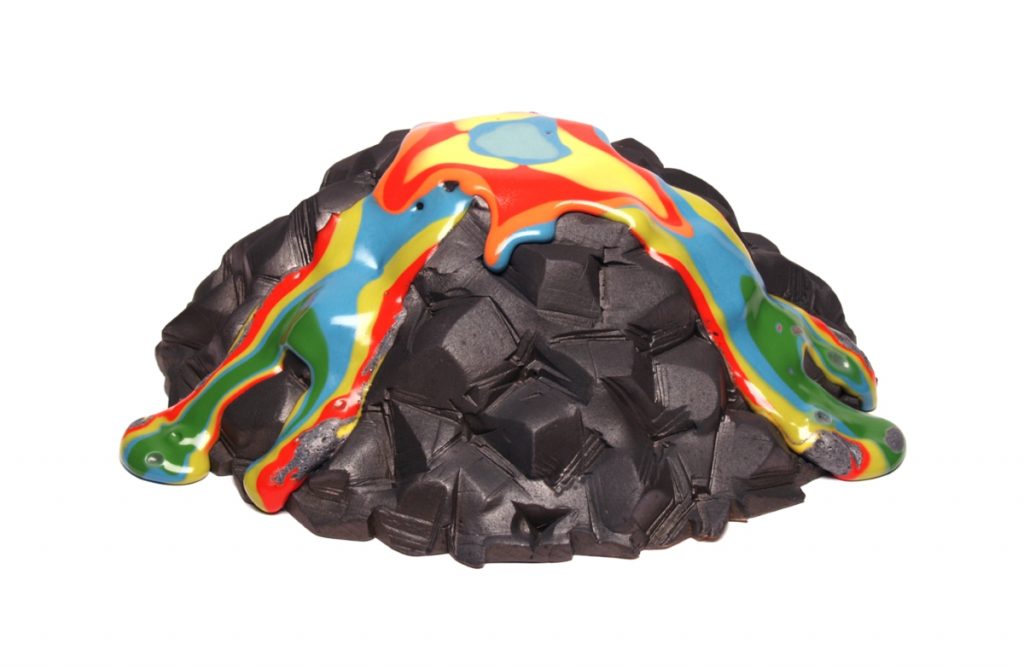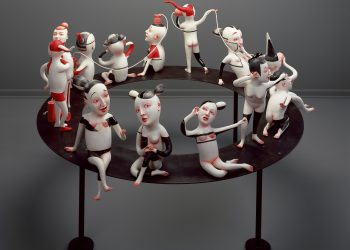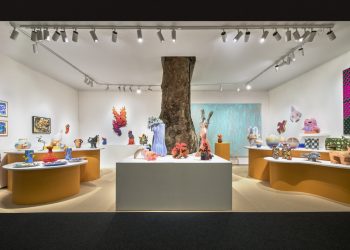Dylan Beck is an artist and educator living in Portland, OR where he works from his home studio making sculpture and utilitarian pottery. His sculpture explores landscape and the built environment. Beck’s work vacillates between veneration and admonishment as he invites his viewers to consider human’s role within the ecosystem and our relationship to natural resources. He has served as a professor at Oregon College of Art and Craft and Kansas State University. He has been invited to many significant national and international exhibitions, including: Korean International Ceramic Biennale , South Korea; Sans Les Main s, France; NCECA Invitational , Nelson Atkins Museum, Kansas City, MO. His artworks are included in several public and private collections including the Everson Museum of Art and Hilton Curio Collection.
Visit Dylan Beck’s website and Instagram profile.
Featured work
Rocks, 2015-2019

I seek to create works of art that encourage consideration of an ecological civilization in which humans are not separate from nature. I draw inspiration from a range of concepts such as personal experience of landscape, land and natural resource use, the psychological effects of living in the “non-places” of a supermodern world. Our contemporary condition has given us an overwhelming trust in progress and created a general disregard for our relationship to natural systems and processes.
In my studio practice, there is no hierarchy of material or method. I believe in a holistic approach to art making–an approach that balances aesthetic judgment, craftsmanship, concept, and material. Within my work there is often a direct material-to-concept relationship. Accepting that all materials carry cultural and historical significance, I choose materials that feed my conceptual agenda.
Through personal experience of landscape and image collection, I select ubiquitous forms and images. I then use that information to construct sculptural arrangements, drawings, digital images, animations, etc. I employ surrealism and psychedelic imagery to amplify the visual experience as a means of visual intoxication and persuasion. I acknowledge my inescapable participation in the Capitalocene (1) and our material culture. Therefore, I situate my work between skepticism and deference.
(1) Capitalocene — a distinct geological epoch in which the capitalist formula of “accumulation for accumulation’s sake” has penetrated into every nook and cranny of the planet’s biophysical environment, to the point where the survival of the capitalist system has come to constitute an existential threat to the survival of humanity as a whole.”













